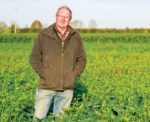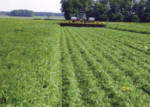Advertise Follow Us
Items Tagged with 'roots'
ARTICLES
U.K. Grower Shares Success Stories from His Conversion from Full Tillage to Direct Drilling
Reports of his retirement have been greatly exaggerated as David White is direct drilling various crops on light ‘boys’ land near Cambridge, England.
Read More
20 Ways To Build Better No-Till Soils
World-renowned soil scientist and Rhizoterra co-founder Jill Clapperton shares tips and insights about no-tilled soils that could help growers lower their productivity costs and increase yields.
Read More
What I've Learned from No-Tilling
Nudging No-Till Yields From Every Direction
Indiana no-tiller Jack Maloney finds mastering many production practices is the key to pushing no-till corn and soybeans yields higher.
Read More
Gypsum Balances Nutrients, Builds Up Soil Structure
Proper applications of gypsum, an efficient carrier of soluble calcium, can help no-tillers improve the soil environment for plants and reclaim problematic sodic soils.
Read More
Cover Crops: Starting Is The First Step
The right covers can transform tough soils, but no-tillers must fight past early challenges to find what works on their farm, Terry Taylor says.
Read More










